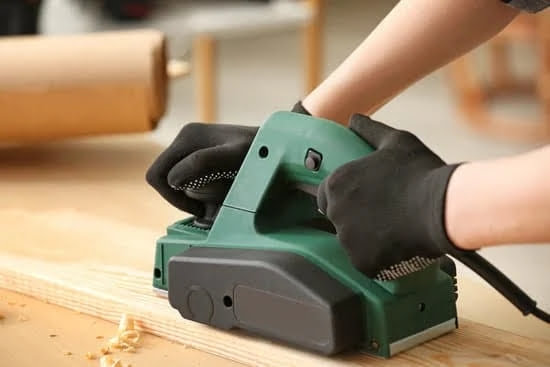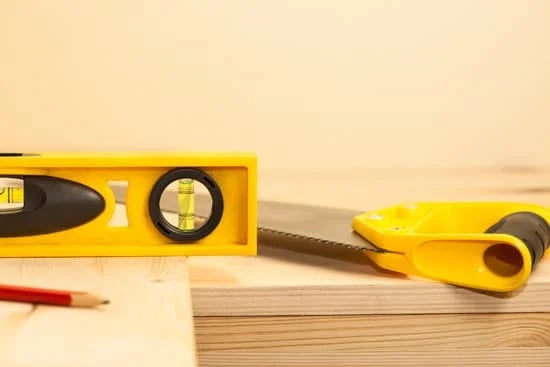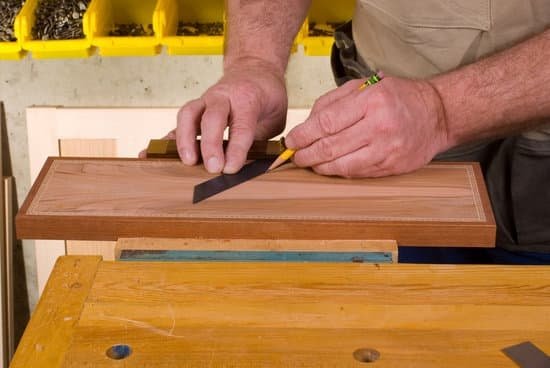Building your own bookcase can be a rewarding and cost-effective project that allows you to create a piece of furniture that perfectly suits your needs and style. In this article, we will provide you with step-by-step woodworking plans on how to build a bookcase from start to finish.
By building your own bookcase, you have the opportunity to customize it to fit any space in your home. Whether you need a slim and tall bookcase for a small alcove or a wide and spacious one for displaying an extensive book collection, you can tailor the dimensions of the bookcase to meet your specific requirements.
Not only does building your own bookcase give you creative control over the design, but it can also save you money compared to purchasing a pre-made piece of furniture. With our comprehensive guide, you will learn everything from choosing the right materials and design to taking accurate measurements and assembling the bookcase with professional techniques.
Get ready to embark on an exciting woodworking journey as we equip you with all the knowledge and skills needed to build your very own bookcase. So grab your tools and let’s dive into this rewarding project.
Gathering Materials
Gathering the necessary materials and tools is a crucial step in building a bookcase. Having everything you need on hand before starting will help ensure a smooth and efficient construction process. Here is a comprehensive list of all the tools and materials you will need for the project:
Materials
- Wood: The type of wood you choose will depend on your personal preference, budget, and desired aesthetic. Common options for bookcase construction include plywood, solid wood like oak or pine, or MDF (medium-density fiberboard).
- Screws: Select screws that are appropriate for the thickness of your chosen wood and the joinery technique you plan to use.
- Hardware: This includes items such as shelf supports, hinges (if applicable), decorative trim, and any other hardware specific to your chosen design.
- Sandpaper: Different grits of sandpaper will be needed for various stages of the project, from smoothing rough edges to prepping the wood for finishing.
- Wood glue: An essential adhesive for joining wood pieces together.
Tools
- Measuring tape: Accurate measurements are crucial in building a bookcase. A quality measuring tape will help ensure precise dimensions.
- Saw: Depending on your design and preference, you may need a circular saw, table saw, or miter saw for cutting wood pieces to size.
- Drill: A cordless drill with appropriately sized drill bits is essential for creating pilot holes and screwing in screws.
- Screwdriver: For manual screwdriving tasks or adjusting screws that may need tightening during assembly.
- Router (optional): Depending on your design choices, a router may be necessary for creating decorative edges or grooves in your bookcase’s wood pieces.
- Clamps: These are useful for holding pieces together securely during assembly or while waiting for glue to dry.
It is important to gather all these tools and materials before beginning your bookcase project. This will save you time and frustration by ensuring that you have everything you need readily available at each step of the building process. Additionally, consider wearing appropriate personal protective equipment, such as safety glasses or gloves, for certain tasks to ensure your safety throughout the project.
Choosing the Right Design
When it comes to building a bookcase, choosing the right design is an essential step in the process. There are countless options available, each with its own unique style and functionality. Exploring different bookcase designs allows you to find one that suits your needs and complements the overall aesthetic of your space.
One factor to consider when choosing a bookcase design is the intended purpose of the bookcase. Are you looking for a simple and practical solution to store your books, or do you want a more decorative piece that can also display decorative items? Understanding how you plan to use the bookcase will help you narrow down your options and choose a design that aligns with your specific requirements.
Another important consideration is the size and scale of the bookcase. It’s crucial to take accurate measurements of the space where the bookcase will be placed before selecting a design. Consider both the height and width of the area, as well as any architectural features or obstructions that may impact the size and placement of the bookcase. Taking these factors into account will ensure that your chosen design fits perfectly into your space.
Additionally, think about the overall style and aesthetic that you want to achieve. Bookcases come in various styles, from traditional to modern, rustic to contemporary. Consider the existing decor in your room and choose a design that complements it seamlessly. Whether you prefer clean lines and minimalist designs or intricate detailing and ornate carvings, there is a bookcase design out there for every taste.
| Factors to Consider | Design Options |
|---|---|
| Purpose of the bookcase | Simple and practical |
| Size and scale of the space | Traditional |
| Aesthetic preferences | Rustic |
Taking Accurate Measurements
Why Accurate Measurements are Important
Taking accurate measurements is a crucial step in building a bookcase that fits perfectly in the desired space. Whether you are placing the bookcase in a tight corner or against a wall, precise measurements ensure that the finished product will not only look aesthetically pleasing but also function properly. In this section, we will provide you with a step-by-step guide on how to take accurate measurements for your bookcase project.
Measuring the Space
The first step in taking accurate measurements is to measure the space where the bookcase will be placed. Use a tape measure to determine the height, width, and depth of the area. It’s important to consider any obstructions such as baseboards, outlets, or vents that may affect the dimensions of your bookcase. Make note of these obstructions and adjust your measurements accordingly.
Ensuring Precision
To ensure precise measurements, it’s best to take multiple measurements at different points within the space. This helps account for any inconsistencies or irregularities in the walls or floor. Measure at least three times and record the average measurement for each dimension (height, width, depth).
When measuring for height, start from the highest point on the floor and measure up to where you want your bookcase to end. For width, measure from one side of the wall to another at both the top and bottom of the space. This can help determine if there are any variations that need to be taken into consideration when constructing your bookcase.
For depth, measure from back to front of where you want your bookcase to sit. Take into account any molding or trim that may affect how far out from the wall your bookcase can extend.
Remember to be as precise as possible by measuring down to fractions of an inch if necessary. Accurate measurements lead to a better fit and a bookcase that seamlessly integrates into your space.
Marking Your Measurements
Once you have taken all the necessary measurements, mark them down on paper or a digital device. Draw a diagram of the space and label each measurement accordingly. This will serve as your reference point throughout the construction process.
By following these steps for taking accurate measurements, you can ensure that your bookcase fits perfectly in its designated space and meets your functional and aesthetic requirements. In the next section, we will discuss how to use these measurements to create a detailed plan for your bookcase project.
Creating a Detailed Plan
Creating a detailed plan is an essential step in building a bookcase. Whether you choose to use woodworking software or traditional paper and pencil, designing a comprehensive plan will ensure that your bookcase comes together seamlessly.
When creating your plan, start by considering the dimensions of your space and the specific needs for your bookcase. Will you be storing large hardcover books or small paperbacks? Do you need adjustable shelves? These factors will influence the overall size and design of your bookcase.
Next, decide on the joinery techniques that you will use to construct your bookcase. Common joinery techniques include butt joints, dado joints, and rabbet joints. Each technique offers its own strengths in terms of strength, aesthetics, and ease of construction. Research and select the joinery technique that best aligns with your skill level and desired outcome.
After determining the dimensions and joinery techniques, sketch out your bookcase design on paper or input it into woodworking software. Include details such as shelf heights, spacing between shelves, and any decorative elements you want to add. This plan will serve as a guide during the construction process.
In addition to dimensions and joinery techniques, consider the overall structure of your bookcase. Think about how many shelves you want to have and where they will be positioned in relation to each other. Consider whether you want to include additional features such as doors or drawers.
By taking the time to create a detailed plan for your bookcase, you can ensure that all aspects of the construction process are well thought out and executed smoothly. This will result in a finished product that meets your specific needs while also being structurally sound and aesthetically pleasing.
Cutting and Preparing the Wood
Selecting the Right Wood
Before you begin cutting your wood pieces, it’s important to select the right type of wood for your bookcase. Different types of wood have different characteristics, so consider factors such as durability, grain pattern, and cost when making your decision. Some popular choices for bookcases include oak, pine, cherry, and maple.
Preparing the Wood
Once you have chosen your wood, it’s time to prepare it for cutting. One important step in this process is sanding. Sanding not only smoothens the surface of the wood but also helps to achieve a professional finish by removing any imperfections or rough areas. Start with a coarse-grit sandpaper and gradually move to finer grits for a polished result.
In addition to sanding, shaping the wood is another vital aspect of preparing it for assembly. Use tools such as a router or chisel to create desired features or decorative elements on your bookcase. Take your time during this stage and make sure you have accurately marked out all the necessary cuts and joints.
Treating the Wood
Treating the wood ensures that it is protected from moisture, pests, and general wear and tear over time. There are several options for treating wood depending on the desired look and level of protection. Stain can be applied to enhance the natural beauty of the wood while providing some protection against fading or discoloration. Painting is another option if you prefer a more colorful or contemporary look.
For those who appreciate a more natural feel, applying oils specifically designed for woodworking can bring out the richness of the wood while protecting it from moisture damage. Be sure to follow manufacturer instructions when using any treatment product to ensure proper application and desired results.
By carefully selecting, preparing, and treating your wood pieces, you will not only achieve a professional finish but also ensure that your bookcase has the necessary durability to withstand years of use.
Assembly and Joinery
To assemble the bookcase and ensure sturdy construction, there are several techniques that can be used, including biscuit joinery, pocket screws, or dowel joinery. Each technique has its advantages and can provide a strong and durable structure for your bookcase.
Biscuit joinery involves using small, football-shaped wooden biscuits that are inserted into slots created in the joining pieces of wood. These biscuits provide additional strength and stability to the joints. To use this technique, you will need a biscuit joiner tool to cut the slots in the wood. Once the slots are cut, glue is applied to the biscuits and they are inserted into one piece of wood, which is then joined with another piece.
Pocket screws are another popular choice for joining pieces of wood together. This method involves drilling angled holes called pocket holes into one piece of wood and then using special screws designed for pocket hole joinery to secure it to another piece. The advantage of pocket screws is that they create a strong joint without any visible fasteners on the surface.
Dowel joinery involves creating holes in two pieces of wood that align with each other and inserting dowels (cylindrical wooden pegs) into these holes to hold the pieces together. Dowels can add strength to the joints and provide alignment assistance during assembly. It is important to accurately drill matching holes on both pieces of wood to ensure a proper fit.
Using any of these techniques requires careful planning and precision during assembly. Proper alignment and securing each joint with clamps while applying glue or driving screws will help create a sturdy bookcase. It is also recommended to allow ample drying time for glue before moving onto the next step.
| Joinery Technique | Description |
|---|---|
| Biscuit Joinery | Small wooden biscuits are inserted into slots in the joining pieces of wood to provide strength and stability. |
| Pocket Screws | Angled holes known as pocket holes are drilled into one piece of wood, and special screws designed for pocket hole joinery are used to secure it to another piece. |
| Dowel Joinery | Matching holes are created in two pieces of wood, and dowels are inserted into these holes to hold the pieces together, adding strength and alignment assistance. |
By using these assembly techniques, you can ensure that your bookcase is not only functional but also durable. The choice of joinery technique will depend on factors such as the design of your bookcase, the type of wood being used, and personal preference. Experimenting with different techniques may help you find the best method for your project.
Finishing Touches
Finishing Touches: Tips and techniques on how to apply the desired finish to your bookcase, whether it be staining, painting, or using natural oils to enhance the beauty of the wood
Once you have completed the assembly of your bookcase, it’s time to add the finishing touches. The right finish can truly bring out the beauty of the wood and complement your overall design. There are several options to choose from when it comes to finishing your bookcase, including staining, painting, or using natural oils.
One popular option is staining. Stains come in a variety of colors and can give your bookcase a rich, warm look. Before applying any stain, it’s important to properly prepare the wood by sanding it smooth and removing any dust or debris.
It’s also a good idea to test the stain on a scrap piece of wood or an inconspicuous area before applying it to the entire bookcase. This will help you ensure that you achieve the desired color and finish.
If you prefer a painted finish, there are a few steps you’ll need to follow. First, prime the wood with a quality primer to ensure that the paint adheres properly. Once the primer has dried, apply multiple coats of paint with a brush or roller, allowing each coat to dry completely before applying the next one. This will ensure an even and durable finish.
Another option for finishing your bookcase is using natural oils. Oils such as tung oil or linseed oil can help enhance the natural grain and color of the wood while providing protection. Before applying any oil, make sure that your bookcase has been sanded smooth and cleaned thoroughly. Apply thin layers of oil using a soft cloth or brush, allowing each layer to penetrate into the wood before applying another coat.
No matter which finishing option you choose, it’s important to allow ample drying time between coats and before placing any items on your bookcase. This will ensure that the finish fully cures and provides maximum protection.
| Finishing Option | Advantages |
|---|---|
| Staining | – Enhances natural wood grain \n – Provides a warm, rich look\n – Offers color variety |
| Painting | – Allows for unlimited color choices \n – Provides a smooth, even finish\n – Offers great durability |
| Natural Oils | – Enhances natural beauty of wood\n – Provides protection against moisture and stains\n – Easy to maintain and repair |
Final Assembly and Installation
Once you have completed all the previous steps and your bookcase is fully constructed, it is time for the final assembly and installation process. This section will provide a guide on how to finish assembling the bookcase, attaching shelves, backing, and any additional features, as well as tips on securing it to the wall for stability.
- Attaching Shelves: Depending on the design of your bookcase, you may have adjustable or fixed shelves. If you have adjustable shelves, ensure that you have properly measured and marked the desired height for each shelf. Use a drill and screws to attach shelf supports or brackets to the sides of the bookcase. Place the shelves on top of these supports and secure them with screws or other appropriate hardware.
- Attaching Backing: To give your bookcase a finished look and added stability, you can attach a backing panel to it. Measure and cut a piece of plywood or other suitable material that matches the dimensions of the back of your bookcase. Attach it securely using nails or screws, ensuring that it is flush with the edges of the bookcase.
- Additional Features: Depending on your needs and preferences, you may want to add some additional features to your bookcase. This could include crown molding at the top for decorative purposes or attaching door hinges if you want to add doors to certain sections. Take measurements, cut the necessary pieces, and attach them using appropriate techniques.
- Securing to Wall: For safety reasons and added stability, it is important to secure your bookcase to the wall, especially if it is tall or will be bearing heavy loads. Locate wall studs behind where you plan to place your bookcase using a stud finder tool. Mark these locations on your bookcase where they align with studs on the wall. Use screws or brackets designed for wall attachment to secure your bookcase firmly in place.
By following these steps for final assembly and installation, you can ensure that your bookcase is not only functional and aesthetically pleasing but also stable and secure in its designated space.
Maintenance and Care
Maintenance and Care: Recommendations on how to care for and maintain your newly built bookcase, ensuring its longevity and preserving its appearance over time
Once you have completed the construction of your bookcase, it is important to implement regular maintenance and care practices to ensure its longevity and preserve its appearance over time. Here are some recommendations on how to properly care for and maintain your newly built bookcase:
- Dusting: Dusting the bookcase regularly is essential in keeping it clean and free from debris. Use a soft microfiber cloth or a feather duster to gently remove any dust or dirt that may accumulate on the surface of the shelves, sides, and back panels.
- Cleaning: Occasionally, you may need to do a deeper clean of your bookcase. Use a mild wood cleaner or a mixture of water and vinegar to wipe down the wood surfaces with a soft cloth. Avoid using harsh chemicals or abrasive cleaners that can damage the finish or leave scratches.
- Avoid Excessive Moisture: Wood is susceptible to moisture, which can cause warping, swelling, or even mold growth. Ensure that your bookcase is placed in a dry area away from sources of moisture such as windows, humidifiers, or leaky pipes. If spills occur, promptly clean them up using a dry cloth.
- Sunlight Protection: Prolonged exposure to direct sunlight can fade the color and damage the finish of your bookcase. If possible, position your bookcase away from windows or use curtains or blinds to limit exposure to UV rays.
- Proper Weight Distribution: To prevent sagging or structural damage, distribute weight evenly across the shelves of your bookcase. Avoid overloading any one shelf with excessive weight that could cause it to warp or break.
- 6.Correcting Minor Issues: Over time, you may notice minor issues such as loose screws or shelves that need readjustment. Regularly inspect your bookcase and tighten any loose screws or bolts. If shelves become uneven, use a level to ensure they are vertically aligned and make any necessary adjustments.
By following these maintenance and care recommendations, you can keep your newly built bookcase looking beautiful and functioning properly for years to come. Regular attention and care will not only preserve its appearance but also maintain the structural integrity of the piece, allowing you to continue enjoying its use for a long time.
Related Articles:
- //www.example.com/article” target=”_blank”>Tips for Applying a Professional Finish to Your Woodworking Project
- Conclusion
Building your own bookcase can be an incredibly rewarding and cost-effective project. Throughout this guide, we have provided you with step-by-step woodworking plans on how to build a bookcase, from gathering the materials to final assembly and installation. By following these instructions, you will not only create a functional piece of furniture but also experience the sense of accomplishment and pride that comes with completing a DIY project.
One of the main benefits of building your own bookcase is the customization it allows. By choosing the design that suits your needs and style preferences, you can create a piece that perfectly fits into your home decor. Additionally, by taking accurate measurements and creating a detailed plan, you can ensure that the bookcase fits perfectly in the designated space.
Furthermore, building a bookcase opens up the potential for future woodworking projects. Once you have mastered the skills and techniques involved in building a bookcase, you may feel inspired to take on more challenging projects such as cabinets or tables. Woodworking can become a fulfilling hobby that allows you to create unique pieces of furniture tailored to your own specifications.
In conclusion, building your own bookcase not only saves you money but also provides a sense of accomplishment and pride. With careful planning, precise measurements, and attention to detail throughout each step of the process, you can create a beautiful and functional piece of furniture that will enhance your living space for years to come.
Embrace the joy of woodworking as you embark on this project and who knows – it may just be the beginning of many more DIY adventures in carpentry.

Hi everyone! I’m a woodworker and blogger, and this is my woodworking blog. In my blog, I share tips and tricks for woodworkers of all skill levels, as well as project ideas that you can try yourself.






